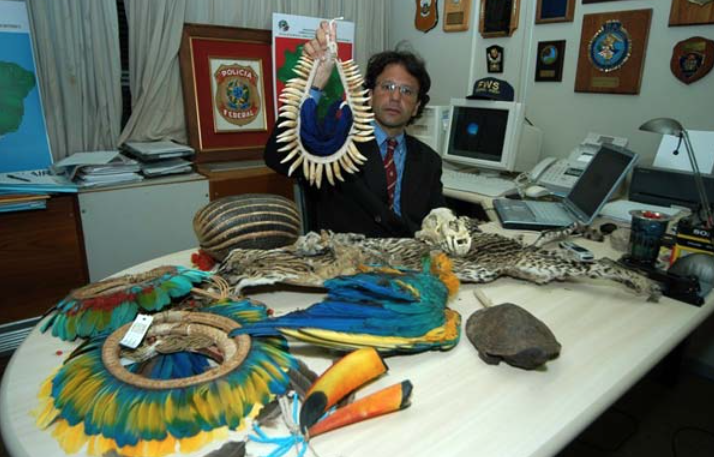Book Review by Mother Nature Network April 2009
Animal Investigators By Laurel A Neme Ph.D.
A new book explores how the world’s first wildlife forensics lab is solving crimes and saving endangered species.
By Jessica Knoblauch
Mother Nature Network (MNN.COM)
Not long ago, illegal wildlife smugglers could pretty much get away with murder. From selling polar bear rugs to crocodile-face ashtrays, these smugglers pull in as much as $20 billion annually, ranking just behind drugs and human trafficking as the third largest illegal trade worldwide.

But a little known group of dedicated scientists are stemming the tide of illegal wildlife trade at the U.S. Fish and Wildlife Service Forensics Laboratory in Ashland, Ore., the world’s first wildlife forensics lab.
In her first book, Animal Investigators: How the World’s First Wildlife Forensics Lab Is Solving Crimes and Saving Endangered Species (Simon & Schuster, $25.00), Laurel A. Neme reveals how the laboratory, known as the “CSI of wildlife,” uses forensic science to investigate wildlife crimes. The scientists’ groundbreaking work helps crack down on illegal wildlife trafficking, which occurs to feed the public’s insatiable desire for exotic animal souvenirs and results in the decimation of many endangered species across the globe.
The lab’s goal is to create scientifically defensible and legally acceptable definitions of species for wildlife parts and products. But as the author explains, identifying a particular species is easier said than done when many victims arrive as unidentifiable parts, ranging from small vials of pills to woven belts, further obscuring the victim’s identity. And, while a typical police lab only focuses on one species, homo sapiens, the work of the wildlife forensics team is compounded by their handling of more than 30,000 species of victims.
Though the plight of endangered wildlife has caught the media and public’s attention in recent years, the illegal trade continues to prosper because the risks of getting caught pale in comparison to the financial rewards, which are on par monetarily with gold, diamonds, and even cocaine, says the author.
 In her book, Neme (pictured left) explains how the forensics lab is working to reduce these crimes with the case studies of three widely unique animal trafficking cases that bend the lines of typical forensics work. Through exhaustive research of court records, journal articles and case files, Neme skillfully describes the intricate details of each case, bringing them to life with anecdotes from wildlife experts, Fish and Wildlife Service agents, academics, government officials and staff at non-governmental organizations.
In her book, Neme (pictured left) explains how the forensics lab is working to reduce these crimes with the case studies of three widely unique animal trafficking cases that bend the lines of typical forensics work. Through exhaustive research of court records, journal articles and case files, Neme skillfully describes the intricate details of each case, bringing them to life with anecdotes from wildlife experts, Fish and Wildlife Service agents, academics, government officials and staff at non-governmental organizations.
The first case involves the Alaskan walrus, where investigators adapt existing crime-solving techniques to determine whether a group of dead, headless walrus were slaughtered illegally for their ivory or simply killed for subsistence hunting.
In the second case, the author delves into an investigation involving the growing trade in black bear gall bladders, widely used in traditional Chinese medicine. The pervasive market, which nets smugglers anywhere from $1,000 to $5,000 per gallbladder, involves heartbreaking animal cruelty that often ends in death.
Finally, the last case brings readers into the world of illegal smuggling of Brazilian Amazon feather art, which threatens such endangered species as jaguars, scarlet macaws, harpy eagles and other tropical animals.
Picked from hundreds of possible stories, these three groundbreaking stories bring to life the fascinating and growing field of animal forensics while illustrating the pressing need for tougher wildlife laws in the midst of the greatest mass extinction since the dinosaur age. In the conclusion, the author points out that though the lab is a vital tool in fighting illegal wildlife smuggling, the existence of many of these animals is ultimately dependent on how valuable we believe they are — dead or alive.
